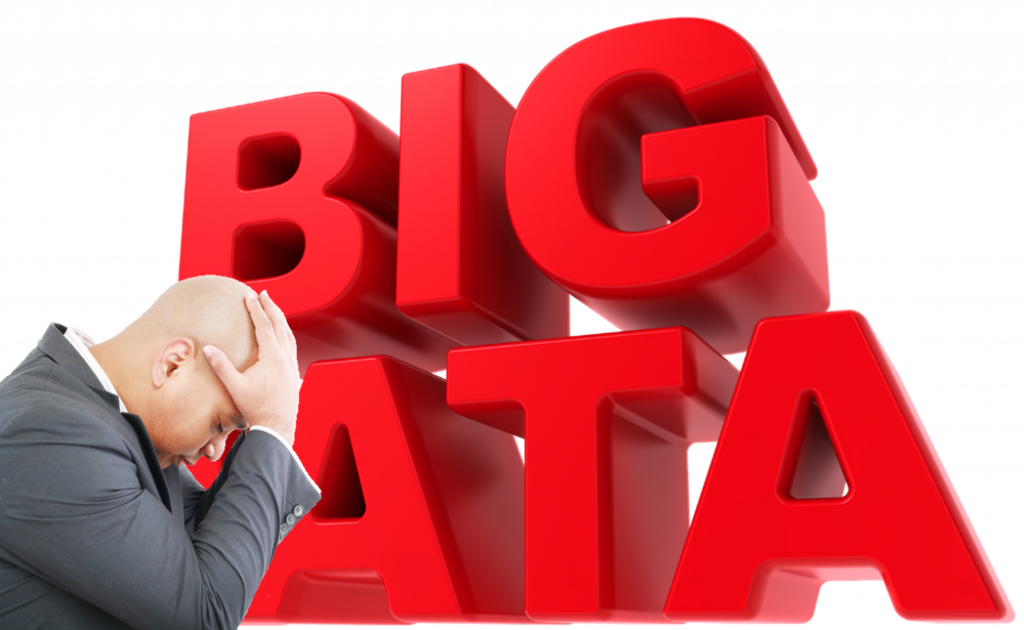Big data remains a big deal. Why? Because data is being generated at rate that would astonish previous generations. “From the earliest starting point of time until 2003,” observes Priya Dialani (@priyadialani), founder of Les Fleurs, “the whole world just had five billion gigabytes of data. A similar amount of data was produced over just two days in 2011. By 2013, this volume was created every 10 minutes.”[1] Unlike most things found in abundance, the value of big data continues to increase. Journalist Adilin Beatrice explains, “In the digital world we live in, data is increasingly becoming the most valuable asset for organizations.”[2] Yossi Sheffi (@YossiSheffi), Director of the MIT Center for Transportation & Logistics, asserts big data already is an organization’s most valuable asset. “The well-worn adage that a company’s most valuable asset is its people needs an update,” he writes. “Today, it’s not people but data that tops the asset value list for companies.”[3] Beatrice adds, “But to explore every bit of data, we need more than just the basics.”
The future of big data
Because data comes in a variety of forms, data needs to be managed to be effective. Tech writer Kamalika Some (@KamalikaSome) asserts, “Data cleaning takes up as high as 80% of data scientist’s valuable time.”[4] To assist with data cleaning efforts, Some reports “augmented analytics” (or augmented data management), which employs statistical and linguistic technologies, is being used to improve the data management process. Another way organizations are dealing with the headache of data cleaning is to purchase cleaned data from a vendor offering data-as-a-service (DaaS). Staff writers at AIThority (AIT)explain, “DaaS introduced users to a new level of data accessibility with the help of Cloud technology.”[5] Other trends affecting big data storage and analytics include:
Cloud Computing. Some notes, “Data never goes out of fashion, but enterprises are grappling with what to do with the data … trapped in data silos and legacy systems. Cold storage delivered as a cloud service might be the answer. … As the amount of big data generated touches more than quintillion bytes, cold storage solutions could save as high as 50% of the overall data storage costs.” The AIT staff notes that hybrid clouds are becoming much more popular. They note, “Both private and public clouds have their own benefits. Hybrid Cloud introduces a cloud computing system, which moves between the two (on-premises and third-party) clouds for flexibility, adaptive memory processing (AMP), and deployment solutions within a company.”
Real-time Analysis. The speed at which companies now conduct business often means data latency is a drawback. Some notes, “Real-time big data analytics … looks [like] a very promising trend, for many businesses.”
Natural Language Processing (NLP). NLP helps democratize big data analytics and organizations have found numerous uses for this capability. AIT staff members note, “NLP provides quality information such as business insights and customer sentiment analysis. It does not just stop at highlighting what customers feel but also suggests what should be done for a better outcome. It also retrieves information from stores quite quickly whenever you want something about a specific topic.”
Possessing big data analytic capabilities is so important for an organization, Mary E. Shacklett (@MaryShacklett), president of Transworld Data, asks, “Are you a big data laggard?”[6] She adds, if your company is a laggard, it should be asking, “Is there a way to catch up?”
Mastering big data analytics
Shacklett insists big data laggards need not lose hope. She explains, “A convergence of database technology and machine learning will give companies that are behind in their big data initiatives a chance to catch up, because companies will no longer need the raw talent and expertise that have been required to develop and deploy big data applications quickly.” Debjani Chaudhury, an Associate Editor with OnDot Media, explains the complementarity between database technology and cognitive technologies, like machine learning. She writes, “In most organizations, big data storage is spread across different computers, on-prem, or on the cloud. The analysis of such an incredible and useful source of data, is best done with AI-based tools and applications.”[7] Before you can master big data analytics, it helps to be familiar with the current lexicon. Vivek Kumar, Content Lead at Analytics Insight, provides a handy list of buzzwords currently in use in the big data world.[8] They include:
Decision Intelligence. Dialani notes, “The primary advantage of utilizing Big Data Analytics is that it has helped the decision-making process.” Kumar adds, “Machine learning algorithms being integrated into decision-making processes have created a field of decision models, decision intelligence. It encompasses a range of decision-making techniques to design, model, align, execute and track decision models and processes.”
Data Science. According to Beatrice, “Data science is a domain that deals with vast volumes of data to derive meaningful information and make business decisions. Data science is a blend of various tools, algorithms, and machine learning principles with the goal to discover hidden patterns from raw data. The term ‘data science’ was coined in 2008 when companies realized the need for data professionals who are skilled in organizing and analyzing massive amounts of data.”
X Analytics. Kumar writes, “X Analytics, a term coined by Gartner, where X is the data variable for a range of different structured and unstructured content such as text analytics, video analytics, audio analytics, etc. It is the ability to run any type of analytics on all of an organization’s structured and unstructured data, regardless of where data resides and in what format. Combined with AI and other techniques such as graph analytics, X analytics will play a key role in recognizing, predicting and planning for natural disasters and other business crises and opportunities in the future.”
Augmented Data Management. As Some noted above, cleaning data is a time-consuming process which can be aided by augmented data management. Kumar adds, “It utilizes machine learning tools and AI techniques to optimize and improve operations. Augmented data management helps businesses secure high-quality data for real-time analytics that converts into business decisions. “
Types of Analytics. Alexander Bekker, Head of Database and BI Department at ScienceSoft, notes, “There are 4 types of analytics. … As it happens, the more complex an analysis is, the more value it brings.”[9] The four types of analytics referred to by Bekker are: descriptive, diagnostic, predictive, and prescriptive.
Self-Service Business Intelligence. Kumar writes, “Earlier, business analytics was perceived mainly as an IT project. But today, the focus has shifted more towards diverse business users such as marketing managers or sales directors. [Self-service business intelligence] can be used by non-technical staff and departments within an organization.”
Mobile BI. According to Kumar, “Mobile business intelligence is becoming more incorporated into BI solutions. It refers to the ability to access BI-related data such as KPIs, business metrics and dashboards on mobile devices.”
Embedded Analytics. “Embedded analytics,” writes Kumar, “helps users work smarter by integrating germane data and analytics to solve high-value business problems. It allows them to work more efficiently as these capabilities are available inside the applications used every day.”
Collaborative BI. According to Kumar, “Collaborating business intelligence is the combination of tools, including social media and other modern technologies, with online BI tools. It enables faster and more informed decision-making, knowledge sharing, employee satisfaction, security, auditing, and stakeholder involvement.”
Cognitive Computing. The now defunct Cognitive Computing Consortium explained, “Cognitive computing makes a new class of problems computable. It addresses complex situations that are characterized by ambiguity and uncertainty; in other words, it handles human kinds of problems.”
Big data is a big deal because it forms the foundation upon which digital enterprises can be built. Which means, big data is the foundation upon which the future must be built.
Footnotes
[1] Priya Dialani, “Three Powerful Benefits of Big Data,” Analytics Insight, 28 May 2020.
[2] Adilin Beatrice, “Big Data vs. Data Science: Knowing the Difference by Undoing the Knots,” Analytics Insight, 5 March 2021.
[3] Yossi Sheffi, “What is a Company’s Most Valuable Asset? Not People,” LinkedIn, 19 December 2018.
[4] Kamalika Some, “10 big data trends for intelligent businesses,” T_HQ, 10 February 2021.
[5] Staff, “Top Trends in Data Science and Big Data,” AIThority, 10 March 2021.
[6] Mary E. Shacklett, “Are you a big data laggard? Here’s how to catch up,” TechRepublic, 16 October 2020.
[7] Debjani Chaudhury, “Nurturing Big Data with the Power of Artificial Intelligence,” Enterprise Talk, 24 September 2020.
[8] Vivek Kumar, “Top 10 Analytics and Business Intelligence Buzzwords in 2021,” Analytics Insight, 28 February 2021.
[9] Alexander Bekker, “4 types of data analytics to improve decision-making,” ScienceSoft, 11 July 2017.





